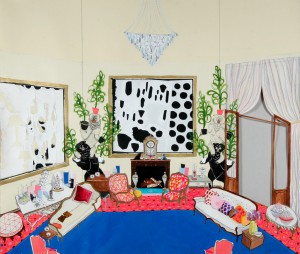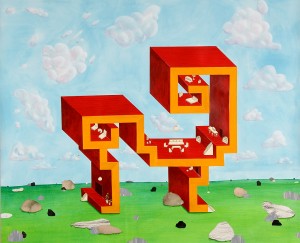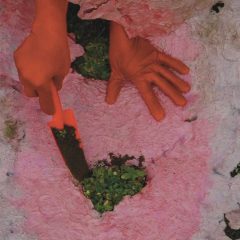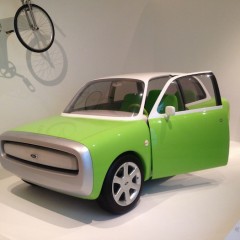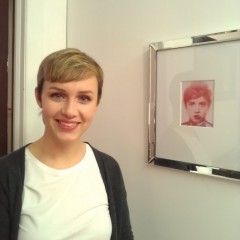I’ve always wondered how those little fascinations of childhood— toys— one day make their way into fully-formed, grown-up culture-making. Action Figures. Blocks. Clay. Dollhouses. No one can convince me that those hands-on pieces of plastic were not, for me and every other child, objects of True Beauty. Just try to remember: standing in the aisles of the toystore, clutching the box of some Star Wars spacecraft, admiring its every last curve and sticker, in the thrall of your first true aesthetic experiences. Or, playing on the living room carpet, building up microfortresses out of God knows what, manipulating forms and fantasies just as you would in the plastic arts. It was the real thing. So much so that I also have trouble believing that the habits and compulsions we got from those toys— from transformers, legos, playdoh, barbies, slip-and-slides— just up and vanished after elementary school. I’d expect to find their perfections and analogues in culturemaking, later on down the line. Little traces or echoes, at least.
This is what initially sprang to mind when I saw Erica Prince’s “werks by jerks,” in the Far In Far Out collection. With a mix of collage, color, and drawing, Erica has designed warmly-colored interiors with a methodology very similar, I’d bet, to the way a girl of eleven might arrange her fantasy dollhouse. I can even picture Erica now, placing a cushion here, an armchair there; tilting her head and testing the effect. The construction seems as if it would be so gratifying— in the act— that they could be done purely for the enjoyment, viewers or no. A very pure activity. In this respect, they remind me of those rainy-day occupations of the Victorian era: scrapbooks. I saw one superior example, given to my friend Abby Sullivan by a relative, in which the girl had pasted together pieces of magazines and advertisements into her ideal family castle. Each page was a room. It was eerie and meticulous; somewhere between a dollhouse and Une Semaine De Bonté— done only as a private vision, for private enjoyment.
Erica’s stuff had the same ring. Not that she’s exactly riffing off scrapbooks and dollhouses— it’s not that literal. Just a continuation of energies. The same lady-like attention to curtains, cushions, and chandeliers. The same presence of improbabilities, like bears and legolike architecture. The reason I’m so intrigued by the crossovers between toys and the plastic arts is because I have always considered culture as just a very memorable and fervid form of freeplay. This is not a new idea. It was made explicit in Friedrich Schiller’s Letters on the Aesthetic Education of Man, in his conception of the Spieltrieb, or “play drive.”
For Schiller, the play-drive helps us navigate between rote necessity and aimless freedom. Culture should neither be fulfilling some pre-appointed function— like making license plates or products for an art market— nor pointlessly screwing around and making nothing of lasting worth. All culture strikes this balance, but every once in a while you see the principle nicely illustrated, as in Erica’s work. I also recommend checking out the “werks” by the others in the exhibition— Garrett Davis, Garret Crabb, and Mylinh Chau— to which I have nothing interesting to add, but are definitely worth seeing.
Far In Far Out continues at the FUEL Collection, until October 24th.


